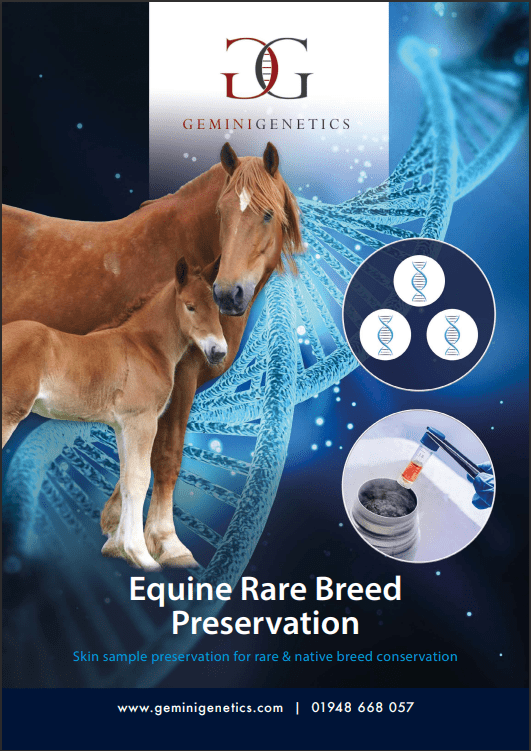Equine Native Breed Conservation
Preserve & conserve rare breed equines via skin sample preservation
Equine Rare & Native Breed Preservation at Gemini Genetics
Rare Breed Preservation at Gemini Genetics
The Power Of Skin Samples
At Gemini Genetics, we are assisting with the preservation of UK rare and native breed equines, via promotion of skin sample genetic preservation. Benefits of skin sample preservation for conservation include;

Inclusion of all genders
As its a non reproductive cell, all genders and age ranges can be genetically preserved, allowing the genetics of mares and geldings to be captured as equally as stallions.

Capture of the whole genetic profile of the donor animal
Unlike gametes (sperm and eggs) which contain only 50% of the DNA of the donor animal, skin samples contain 100% of the genetic profile of the donor.

Infinite genetic resource
DNA within skin samples can be cultured to increase the genetic resource available for the donor animal. This is different to semen stocks, which reduce upon use. By contract, the cells within skin samples can be increased upon use, making skin an infinite resource for conservation.

Loss of rare breed genetics & survival threat
Through population challenge e.g. inbreeding or disease
Animal Conservation
The application of genetic replication for conservation is to allow for the re-introduction of lost genetics and genetic diversity, to assist with breed survival and fitness, without the need for outbreeding or cross breeding. In the event of a breed/ species genetic narrowing, preserved skin samples can be analysed and individuals least genetically related to the current living population can be selected for genetic replication, to bring back much needed genetic diversity to the living population.
A further future use of preserved skin samples is via induced pluripotent stem cell technology. Here, skin cells are reprogrammed to generate sperm and egg cells. This would allow the creation of new population individuals & new genetic sets from the preserved skin cell DNA. This technology is at present most developed in mice species but is subject to significant research and development and holds much promise for the future for animal conservation breeding.

Breed restoration through skin preservation
Recovery of lost genetics & improved survival













